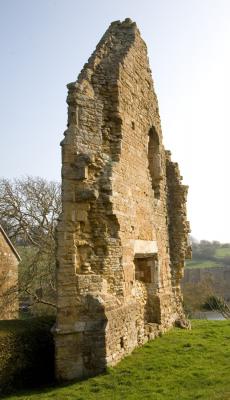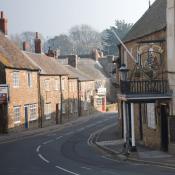
The charming village of Abbotsbury marks the centre of an area that has been settled for more than 6000 years. Within the present parish are over 20 tumili or burial mounds, which indicate that there was a high population here from very early times. Abbotsbury Castle is an Iron Age hill fort a few miles from the village, one of several in the area. The local Celtic tribe in the area at the time these forts were built were known as the Durotriges.
The Durotriges were conquered by the Romans during the 1st century AD and various Roman fragments and artefacts have been found around the area. It is believed that the first churxh was built here in the early 5th century by Bertulfus, a priest to whom, it was claimed, St Peter appeared regularly.
By the middle of the 7th century, the Saxons were established in the area, which became part of the kingdom of Wessex. By the 9th century, Abbotsbury was under the jurisdiction of Glastonbury Abbey. In the meantime, the area had suffered invasion by the Vikings, who established themselves over a period of 200 years from the end of the 8th century.
King Canute granted the lands around Abbotsbury to his steward, Orc, who founded a Benedictine monastery on the site of the early church. Following the Norman conquest, Abbotsbury became a prosperous community. The monastery was mentioned in the Domesday Book as owning eight manors.
Abbotsbury received a charter to hold a Friday market from Edward I. By this time the monastery had become even richer, owning land and property throughout the surrounding towns and villages. However, the Black death in the 14th century began a decline in the fortunes of the Abbey, culminating with the eventual dissolution in the reign of Henry VIII.
Sir Giles Strangways enforced the closure of the Abbey of St. Peter, on behalf of the king, but later purchased the land and buildings. The property has remained in the same family since that time.
During the Civil War, the family house was destroyed, taking around 670 of Cromwell's men with it, but unfortunately destroying many of the ancient records of the monastery. Since then the fortunes of the village have declined and it is now a fraction of the original community.
Today Abbotsbury is principally a tourist attraction with its Sub-Tropical Gardens and the Swannery, which lies in a sheltered lagoon at the end of the Fleet, the water dividing Chesil Bank from the mainland. One of the best views of the village is from the summit of Abbotsbury Hill.
St. Catherine's Chapel dates from the 15th century and stands upon another hill overlooking the village. Many of the houses and cottages in Abbotsbury date back to the 16th century and some incorporate remnants of the old abbey buildings. Most of these old cottages are thatched with wooden casement windows.
The visitor can always find somewhere to eat and drink in Abbotsbury, there are several tearooms and public houses, serving food. There is a convenient car park in the centre of the village and plenty of places to explore on foot. There are even a few of the old crafts still being practised. The village blacksmith is a good example.
















